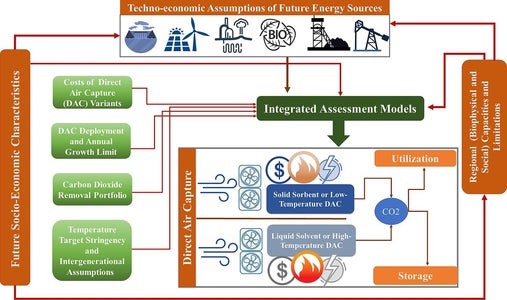Authors
Kasra Motlaghzadeh
PhD Candidate
Vanessa Schweizer
Associate Professor
Neil Craik
Professor
Juan Moreno-Cruz
Associate Professor
Abstract

To limit global warming to levels set in the Paris Agreement, integrated assessment modeling highlights the necessity of removing gigatons of carbon dioxide. Direct air capture is one of the potential methods for carbon dioxide removal and has gained significant attention despite being a relatively new technology. While some scenarios can meet Paris targets without relying on direct air capture, other models show the need for up to 38 gigatons/yr of removal by this technology. Such wide variation in projections reflects uncertainty over the feasibility of deploying direct air capture at scale and points the need for greater attention to the model assumptions driving this variation. This study provides a comprehensive review of scenarios from the Intergovernmental Panel on Climate Change Sixth Assessment Report and peer-reviewed studies focusing on direct air capture as a mitigation strategy. The review identifies several key factors contributing to uncertainty in direct air capture projections, including prolonged fossil fuel use, diversity of carbon removal methods, future socio-economic conditions, intergenerational assumptions, deployment limitations, and technology costs. The study recommends conducting multi-model assessments of direct air capture scenarios due to the influence of various assumptions and model structures on projections. The authors also suggest including different variants of direct air capture technology and both carbon utilization and storage pathways in future models, as these factors can impact system demands, economic efficiency, and public acceptability.